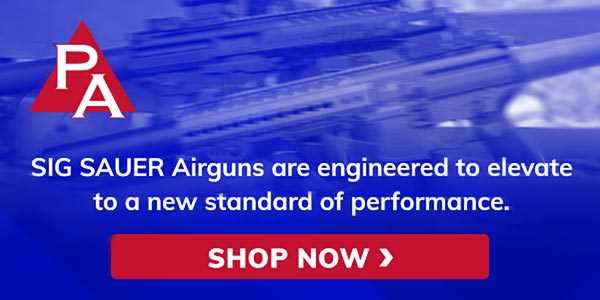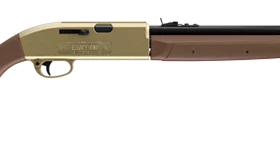This report covers:
- Start
- So what?
- The Benjamin Discovery
- What happened
- So what? number two
- The electronic PCP valve
- Not finished
- Discussion
- People
Today we look at the mysterious world of airgun design. Last Friday reader Bob M. commented, “I wonder what the education and training requirements are for airgun design and manufacturing jobs?”
I answered him, “Training for jobs in the airgun industry? Not so much.” But what his question triggered was a firestorm of thoughts in my head about all I have seen regarding this very subject over the decades. I just had to address it for you today!
There are no schools for airgun design. It’s too small and narrow a field. But mechanical engineering is a great start. I told Bob that the various airgun companies do not share their secrets. So there are no books. But their products are simple enough that just looking at them tells a lot.
Start
I’ll begin this report with something I heard back in the 1990s when I was writing The Airgun Letter. A guy who was a few years from retirement told me he thought he might like to dabble in airguns after he left his current full-time job. I told him it would be easier to just put all his money in a big pile and set fire to it now, because he was going to lose his shirt.
Let me contrast that with something that actually happened. John McCaslin, the owner and founder of AirForce Airguns had a full-time job with the federal government. It involved law enforcement though he wasn’t actually a cop. He had an idea for an air rifle he wanted to see and he turned his garage into a small machine shop just to build it. The 12X36 South Bend lathe he purchased new then is today in need of an overhaul from use. When he talked to a friend who lives in the UK about his desire, that friend brought to the SHOT Show an airgun he was selling to show John what was possible.
The airgun Geoff Darvill showed to John McCaslin at the SHOT Show. It was powered by CO2.
When John saw the gun he said, “I could do better than that!” to which his friend challenged him to try. The result was the rifle that became the AirForce Talon.
John went on building airguns for several years while holding down his day job. Eventually the sales became so brisk that he had to hire full-time employees and he only came to the shop after work. Yours truly was one of those early employees. And, as they say, the rest is history that has played out in front of our eyes. The Chinese and Koreans have tried to knock off John’s designs but they haven’t succeeded. But the Chinese have made a plastic toy Condor. They say that imitation is the sincerest form of flattery, but I don’t know how flattered John feels.
John is retired from the government now, but he still works 70-90 hours each week, running the company that he started on a dare. That’s not “dabbling” folks. That’s commitment! Oh, and Bob, John’s formal training? He trained as an accountant!
So what?
Here’s what. John McCaslin demonstrated that a straight flow-through of compressed air is more efficient than making air turn 180 degrees (coming back through a firing valve then up into the breech where it turns 90 degrees to push the pellet down the bore). He demonstrated that power can be controlled by regulating the tension on the striker spring that hits the striker to open the firing valve. Make it right and you get an air rifle with power that’s user-adjustable. Many of you forget that the Talon was the first airgun to do this. The Koreans jumped on it a few years later but the Talon was first. He demonstrated that controlling the size of the orifice through which the compressed air passes is an ideal way of controlling power. He demonstrated that 3000 psi is all the air pressure that’s needed to generate extreme power.
These airgun design attributes are all attributable to John McCaslin and I’m just hitting the highlights. There are things in the works that I cannot mention that will change the future of airguns. Or, you could just copy an existing design, give it a way-cool tactical name and hope the orders come rolling in.
The Benjamin Discovery
In 2006 I proposed to Crosman that they build their own precharged pneumatic (PCP) air rifles in New York, rather than importing guns from the UK with their name on them. I proposed that they build sporting PCPs that were only filled to 1,800 psi and that they sell high pressure hand pumps with them. They were curious and invited me to their plant near Rochester, to discuss my ideas. I took several mocked-up proof of concept items to demonstrate my ideas.
Lest anyone think I thought of this myself, I got the idea from Tim McMurray and Larry Durham, whose USFT rifle worked this way and was filled to even lower pressure while achieving over 900 f.p.s. with H&N Baracuda pellets. In other words I used what they had done to advance the sporting air rifle world because their guns were strictly for competition.

The USFT rifle is for competition, only.
What happened
When I arrived at Crosman I was surprised to learn that their engineer, Ed Schultz, had already built two prototype rifles, a .177 and a .22, to test my hypothesis. Of course I knew it wasn’t a hypothesis because I had seen the USFT in action. But Ed, and also the management at Crosman, was shocked to learn that an air rifle that was filled to only 2,000 psi (yeah, Ed changed my spec, but who cares?) could be just as powerful as one filled to 3,000 psi. Ed built the prototypes in a couple days from Crosman 2260 CO2 rifles.
The vice president of sales told Ed the .177 rifle had to get up to 1,000 f.p.s. which in his world was the magic number for generating sales. Ed got his prototype .177 up to the mid-900s in just three days of fiddling and he knew he could top 1,000 f.p.s. without a problem. And the rest, as they say, is history.
My ideas didn’t stop there. I wanted the gun that was to become the Benjamin Discovery to be sold in a box that also contained pellets, a hand pump, and a manual that explained how PCPs work in general as well as how this one worked specifically. And I wanted the price for the entire kit to be $250 out the door. We didn’t quite get to that price but we came close.
So what? number two
So — the sub 3,000 psi fill was “born.” It was of course really brought into being by Mac-1, but by moving it over into the low-cost sporting airgun world more people knew about it. And that isn’t all.
In 2017 Umarex brought out the Gauntlet PCP at a retail of less than $300, starting the price-point PCP race. My dream of affordable PCPs was finally realized. And look at what has happened there!
The electronic PCP valve
As far as I know, Daystate was the first company to use a computer-controlled solenoid to open and close the firing valve on their air rifles. But Lloyd Sykes was the first one to do it and let the user adjust the program. Unfortunately his invention was put into the Benjamin Rogue, a committee-designed big bore air rifle that looked like the offspring of a battle rifle and a coffeemaker. It sold about that well, too. Unfortunately while the train was being derailed in 2010 BB was in the hospital for 3-1/2 months with pancreatitis.
The Rogue was a brilliant concept that was executed poorly. In a way it was similar to the 1903 Springfield that the U.S. Army adopted and then ordered the magazine cutoff switch to be thrown in combat so the troops had to shoot single shot and not waste ammunition. That makes sense — right? I mean, if there is a water shortage we want to be sure to place limits on our firefighters because if we don’t they’ll just spray water all over the place!
Not finished
What about springers? What makes them work best? Well, the Springman, Jim Maccari, told us that loose tolerances in the powerplant were the cause of vibration and losing power. Then British airgun genius, Ivan Hancock, brought out the Mag-80 Laza kit for the Weihrauch HW 80/Beeman R1. By buttoning the piston and reducing tolerances within the spring piston powerplant, plus using a thick grease that I dubbed Black Tar in The Airgun Letter, he boosted my .22-caliber Beeman R1’s power while making it absolutely vibration free.
Ivan also gave us the Venom Mach II (the progenitor of the TX200?). And then Air Arms followed on with the TX200 Marks I, II and III.
And, guess what? Sig also got it right with the ASP20 breakbarrel rifle, but they left the building before very long. Oh, and remember who was one of the three engineers on the ASP20? That’s right — Ed Schultz!
Discussion
So, Bob, there both is and is not a lot known about airgun design. The sharp folks know how to glean the information by looking at what works. The others know the phone number and email address of their counterpart in China where their company’s airguns are made. And that, ladies and gentlemen, was what I tried to drag out of you last Friday!
People
The answer I was hoping to see in the comments to last Friday’s report was PEOPLE. It’s people who make the difference in airguns, automobiles and any other manufactured item you care to name. I thought by mentioning Ed Schultz twice in that report and by mentioning the cronyism between the hypothetical marketing VP and her lawyer friend/college roommate, you would realize that having the right people in a company makes all the difference in the world. Readers shootski and fish came SO CLOSE to getting it! In fact, I think they got it and just didn’t say it that way.
College degrees and education in general are meaningless unless the people who have them are motivated to give the job their best. People are not plug-compatible and interchangeable, just because you give them a job title. And that, Bob M. and everybody else, is the answer to how airguns are designed.
My wife, Edith had a business degree. She loved alternative medicine. She wrote Dr. Atkins’ (the diet doctor) monthly newsletter. But when I taught her how to shoot with my Sheridan Blue Streak she developed an affinity for airguns. It began as a way to eliminate mice in the house. It ended with her writing and editing the descriptions for all the products on this website.
It’s people, not education or training. People.








Leave a Reply